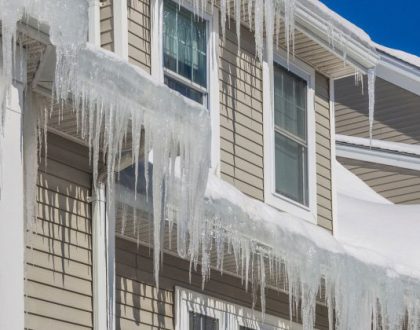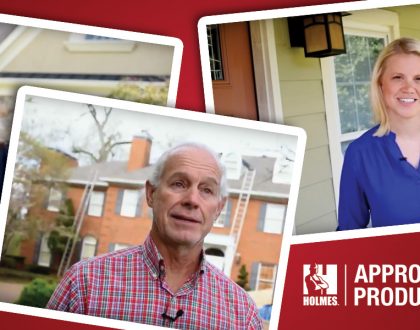The Right Underlayment Is Just As Important As The Right Shingle

When it’s time to put a new roof on a home, there is plenty to consider in terms of budget, appearance, and performance. Many homeowners focus on shingles as the most important component of a roofing system. After all, roofing shingles are the most visible element of every roof, and are available in a vast array of styles, shapes, and colors to give homeowners options that suit their wants and needs.
What goes under those shingles is just as important when it comes to a roof’s performance. As part of a complete roofing system, roof underlayment is installed over the roof’s deck and under the shingles. Once a roof is completely installed, the underlayment is no longer visible, but it still plays a critical role in the roof system’s quality and durability.
For shingle roofs, two types of underlayment are the most commonly used today.
The Classic Standard: Felt Underlayment
Felt underlayment is made from either organic or fiberglass substrate, although the organic type is much more common. This type of underlayment has been used for decades and is a suitable and cost-effective choice. It is supplied in two thicknesses: 15-pound and 30-pound. 15-pound felt underlayment is thinner and therefore less expensive than it’s 30-pound counterpart, but offers less protection. 30-pound felt is more resistant to potential damage during installation, and will protect the roof longer should it become exposed to weather.
Over time, the asphalt will gradually wear down, leaving the underlayment less effective and moisture-absorbent. This happens more rapidly when felt is exposed to heat. The heat source may be a warm climate, a particular type of roof-covering material, or poor roofing ventilation. Also, exposure to ultraviolet (UV) radiation weakens felt underlayment and will speed up its deterioration.
The Newer and Advanced Option: Synthetic Underlayment
Synthetic underlayment is designed to provide greater strength, longer exposure, and safer walkability, while offering water-shedding capabilities within the roof system. As with other materials used to manufacture underlayment, the use of synthetics has advantages and disadvantages.
Advantages of synthetic underlayment include the relatively low weight yet high strength. It is typically more skid-resistant than felt underlayment, and is resistant to fungus growth, since it doesn’t absorb moisture. They are also very resistant to UV damage, much more so than organic felt, and can be left exposed to weather conditions. This is helpful in situations when the installation of the shingles may be delayed.
But there are also issues to consider with this synthetic product. Wicking, which is the process of channeling moisture, can be more problematic than with felt underlayment. Also, installation along roof eaves is different with some types of synthetics, making professional installation by an experienced contractor crucial. If not installed according to manufacturer’s instructions, the roof may develop moisture problems.
Choose Wisely. Choose Atlas.
Deciding what type of underlayment to use is an important step in the roofing process. Regardless of material is chosen, be sure to go with a trusted, reputable manufacturer. Atlas roofing underlayment provides an added layer of defense and durability with every roofing installation or roofing repair.
Contact Streamline Enterprises for more on Atlas Underlayment options.
Streamline Enterprises is an Independent Contractor, not an Employee or Agent of Atlas Roofing Corporation.
Recommended Posts

What Causes Ice Dams and 3 Ways to Prevent Them
January 16, 2024

How tough are GAF shingles?
October 13, 2020

Homeowners Love Atlas Algae Resistant Shingles
September 26, 2019

